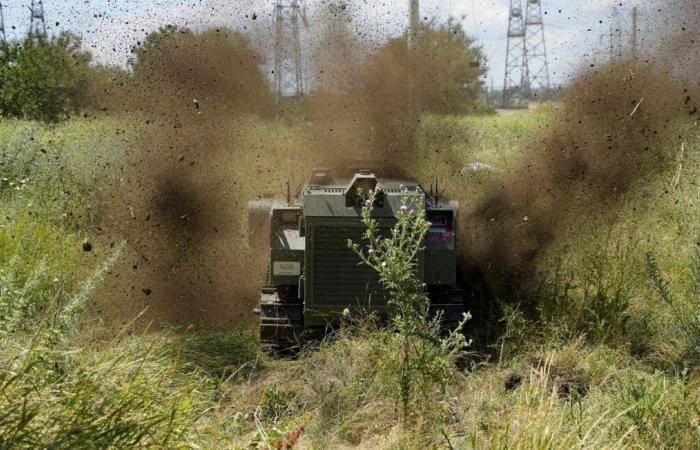Since Russia's invasion in February 2022, Ukraine has not only transformed into a battlefield but also a veritable minefield. And the dissemination of these explosive devices which, at the end of the conflict, are extremely deadly for civilians, is not about to stop. Last Wednesday, Washington announced Joe Biden's decision to deliver antipersonnel mines to Ukraine. The American president's objective is to support kyiv as much as possible before Donald Trump comes to power.
But this decision caused controversy, particularly among human rights associations who consider mines to be a scourge for civilians. According to the Landmine Monitor, in 2023, 84% of recorded victims were civilians and, among them, more than a third were children. The United States defends itself by first invoking the military situation and the urgency of slowing down the Russian advance but also by ensuring that these mines are “non-persistent”. That is to say, they are equipped with a self-destruct or self-deactivation device.
Mines “stored in haste”?
“A non-persistent mine can be set to become inert again after a certain time, probably by dissociating the firing mechanism from the explosive,” explains Léo Péria-Peigné, weapons specialist. Former French general Vincent Desportes adds that it could be “batteries that wear out or life with a stopwatch.” When the mechanical part and the explosive part are dissociated, “it will not explode if you step on it once deactivated but still contains a quantity of explosive which can react if you shoot it or if you put it in contact with a source of heat,” notes Léo Péria-Peigné.
According to Mary Wareham, of the NGO Human Right Watch, interviewed by AFP, the mines delivered by the United States are “obsolete mines still in American stocks”. Washington, in fact, announced that it would no longer produce them in 1997. Officially, therefore, the mines that Ukraine will receive are around thirty years old. However, “if they are old, it is even more dangerous”, slips General Vincent Desportes who specifies that the mines are “very rustic” objects which can sometimes be “stored hastily because it is not expensive at all.”
Frequent failures
But the United States has not signed the Ottawa Convention on the ban on antipersonnel mines, recalls the general, who considers that it is therefore “probable” that the country still produces them. Léo Péria-Peigné assures for his part that, even if the mines are inexpensive, it is very likely that they were correctly stored by the United States. “the American forces have a stock culture which, unlike the Russian forces, has not suffered from the very severe budgetary restrictions of the 1990s. It is also all the more important to correctly store explosive systems which can, in the event of malfunction, cause a catastrophic chain reaction. »
Correct storage or not, failures are frequent in the field of armaments. “Regularly, armies test ammunition and throw away entire stocks due to obsolescence,” recalls General Vincent Desportes. In Ukraine, numerous shells and other missiles have hit land without exploding and constitute a real risk for civilians. Unlike mines whose deactivation process is accessible anywhere online, these explosives are not made to be deactivated.
An “ocean of mines”
“There is obviously an element of risk,” underlines General Vincent Desportes. It is not neutral for Ukraine to install these mines, we know that after the First World War in France, unexploded shells killed a considerable number of civilians and mine clearance took years. » “The question of whether or not these mines are persistent is secondary,” estimates Léo Péria-Peigné, but at best it would be a few tens of thousands of devices, he recalls. “A drop of water in an ocean of mines and unexploded ordnance scattered in Ukraine” in short.
All our articles on the conflict in Ukraine
Following the Russian invasion, Ukraine became the most mined country in the world with more than 150,000 km² polluted by mines, an area similar to that of Tunisia. But “seeing things from the angle of mine clearance, which will happen in a second phase, is to ignore the immediate danger and an enemy who does not hesitate to use this type of weapons en masse and without making any real discrimination”, underlines the arms expert who asks: “can you really afford to be noble and tie your hands behind your back when you have the Russian army at your gates ? » Joe Biden seems in any case to have decided.






